10 Traditional Dresses of India
Nowadays, in this phase of fashion, almost all the people around the world wear the same clothes and they also change with time. Western culture was transported to every corner of the world during the British rule itself, but even now some residents of each place are seen wearing veneer according to their ancestors and circumstances. These clothes are their traditional attire. Just like music and food, every country, state or place has its own traditional dress, India, the amazing land of diversity, is an embodiment of beautiful traditional styles. Here, each region has its own separate identity, and dresses play an important role here. Each Indian state has its own traditional fashion sense. So here we are presenting a collection of traditional dresses from India. These dresses are according to climatic conditions, geography, ethnicity, tradition, and cultural backgrounds of their regions. They are sewn, embroidered, or stitched in unique designs that make them look charming and unique in their own way. These traditional dresses represent the places they belong to and anyone may identify people and their region from these dresses. These ethnic dresses have earned admirers from all over the world who sometimes purchase them and preserve them as precious souvenirs when they visit these regions. These traditional dresses are in fact the identity and soul of their land.
Kurta–Pajama
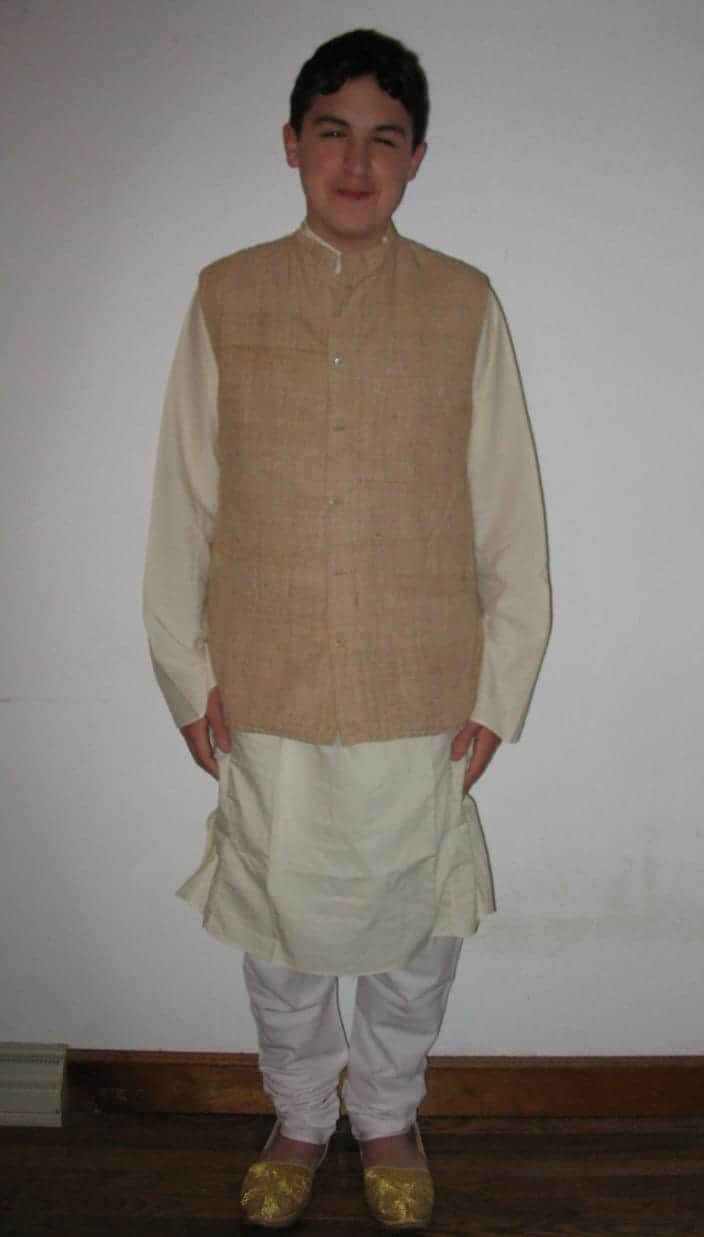
Kurta pajama is a traditional Indian dress which is very popular and favorite dress among men of India. Another form of kurta pajama is the more popular Margani suit in places like Srinagar. This combination is also a favorite for festivals, celebrations or evenings with family.Kurtas are available in all types of materials like cotton, woolen and silk. There is also a tradition of kurtas in India and neighboring countries Bangladesh and Pakistan. There are many enhanced forms of kurtas in which Sherwani, Pathani suits etc. are prominent. Women also use kurtas, but they are commonly called kurtis and other names.
Read More About Kurta–Pajama / Source
Ghagra Choli
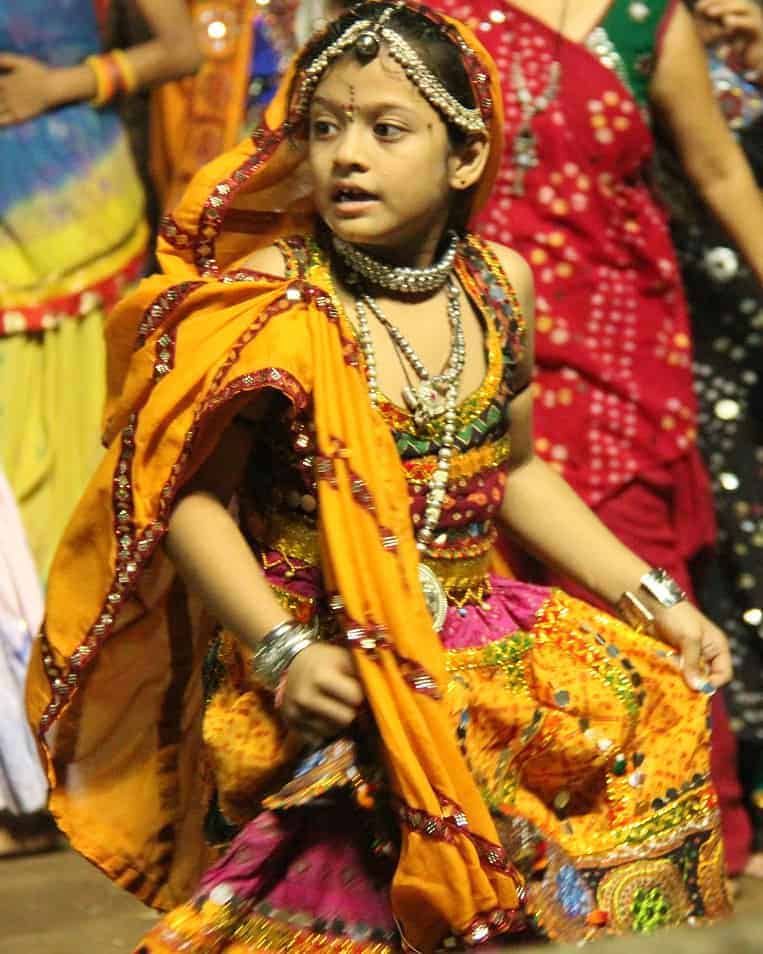
Gagra choli or ghagra choli, which is also known as lehenga choli and locally as chaniya choli, is the traditional clothing of women from Indian Subcontinent, notable in Indian states of Rajasthan, Gujarat, Madhya Pradesh, Uttar Pradesh, Bihar, Haryana, Punjab, Himachal Pradesh, Uttarakhand, Jammu and Kashmir, as well as in Nepal. In Punjab it was traditionally worn with the kurti and salwar. It is a combination of the gagra or lehenga (long skirt) and the choli (blouse), however in contemporary and modern usage lehenga choli is the more popular and widely accepted term by fashion designers, trend setters, and boutiques in South Asia, since ghagra is synonymous with the half-slip worn as an undergarment below the sari.
Read More About Ghagra Choli / Source
Dhoti

The dhoti, also known as panche, vesti, dhuti, mardani, chaadra, dhotar or panchey, is a type of sarong that outwardly resembles trousers. It is a lower garment forming part of the national or ethnic costume for men in the Indian subcontinent. The dhoti is fashioned out of a rectangular piece of unstitched cloth, usually around 4.5 metres (15 ft) long, wrapped around the waist and the legs and knotted either in the front or the back. Dhotis come in plain or solid colours, silk dhotis with embroidered borders are considered to be formal wear.
Read More About Dhoti / Source
Puanchei
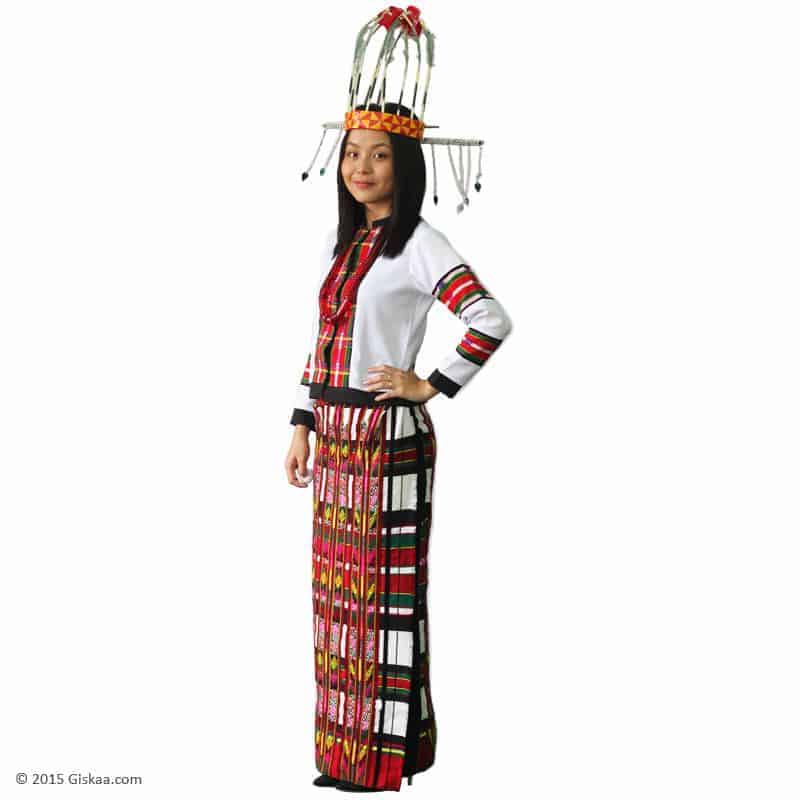
Pheran

Pheran or Phiran is the traditional outfit for both males and females in Kashmir. The pheran consist of two gowns, one over the other. The traditional pheran extends to the feet, which was popular up to the late 19th century C.E. However, a relatively modern variation of the pheran extends to below the knees, which is worn with a suthan inside (loose form of shalwar) similar to the styles worn in Afghanistan. It is optional to wear the suthan with a long phiran as traditionally lower garments are not worn with pherans. The traditional pheran do not have side slits.
According to some sources, the pheran was introduced by Mughal emperor Akbar when he conquered the valley in 1586.In summer, the pheran are made of cotton, but in winter, the pheran is made of wool, covering and protecting the body from the cold especially during snow. These dresses are used by the residents of the Kashmir valley and Kashmiris residing in Chenab Valley.
Read More About Pheran / Source
Lungi

The Lungi or Tahband is a type of sarong that originated in the Indian subcontinent, it is a skirt-like ethnic wear and lower garment wrapped around the waist, usually below the belly. Apart from India, lungis are also worn in Sri Lanka (Ceylon), Bangladesh and Nepal. It is also known as a longyi in Singapore, Cambodia, Burma, & Thailand. The lungi is a particularly popular form of casual wear and night wear for men in regions where the heat and humidity of the climate make it unpleasant and uncomfortable to wear closed and tight garments such as trousers.
Read More About Lungi / Source
Sharara
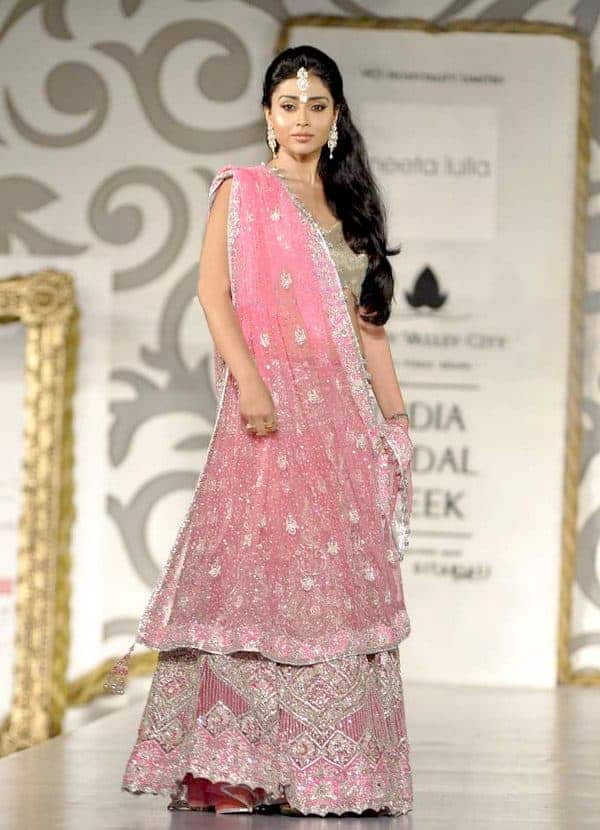
The lehenga, lehnga or langa, (also known as Ghagra or gagra, Chaniya, Pavadai and Lacha) is a form of full ankle-length skirt worn by women in India. It has long been part of the Hindu tradition and was believed to awaken the spiritual chakras of the body. It is secured at the waist and leaves the lower back and midriff bare. Different patterns and styles of traditional embroidery work are used to decorate the lehenga all across the Indian subcontinent. Gota patti embroidery is often used for festivals and weddings. The now outdated, Ghagra-choli, was predominantly worn by young girls. Even today, in Gujarat and Rajasthan, young girls and adult women still wear lehenga. It is the traditional dress of women belonging to the Bettiah Christian community of Champaran and is also worn by Marwari women. Lehenga is considered to be an appropriate garment according to Hindu culture and is also considered a sattvik garment at the spiritual level. Lehenga is worn as the lower portion of a Gagra choli or Langa Voni.
Read More About Sharara / Source
Saree
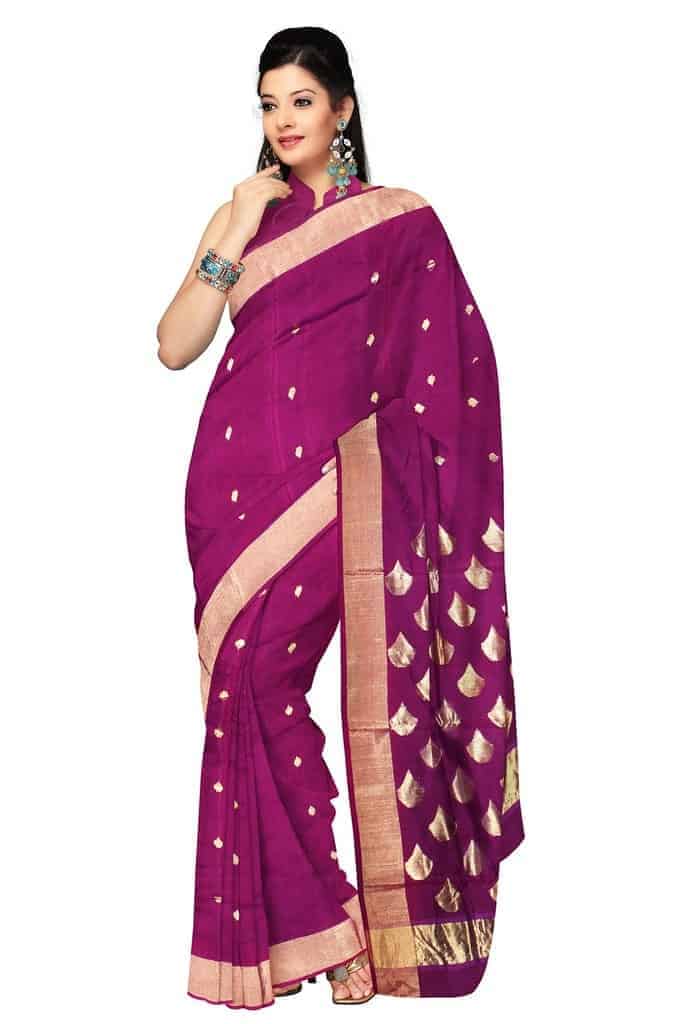
A sari (sometimes also shari or misspelled as saree) is a women’s garment from the Indian subcontinent that consists of an unstitched drape varying from 4.5 to 9 metres (15 to 30 feet) in length and 600 to 1,200 millimetres (24 to 47 inches) in breadth that is typically wrapped around the waist, with one end draped over the shoulder, partly baring the midriff. There are various styles of sari manufacture and draping, the most common being the Nivi style, which originated in the Deccan region. The sari is worn with a fitted bodice commonly called a choli (ravike & kuppasa in southern India, and cholo in Nepal) and a petticoat called ghagra, parkar, or ul-pavadai. In the modern Indian subcontinent, the sari is considered a cultural icon.
Read More About Saree / Source
Sherwani
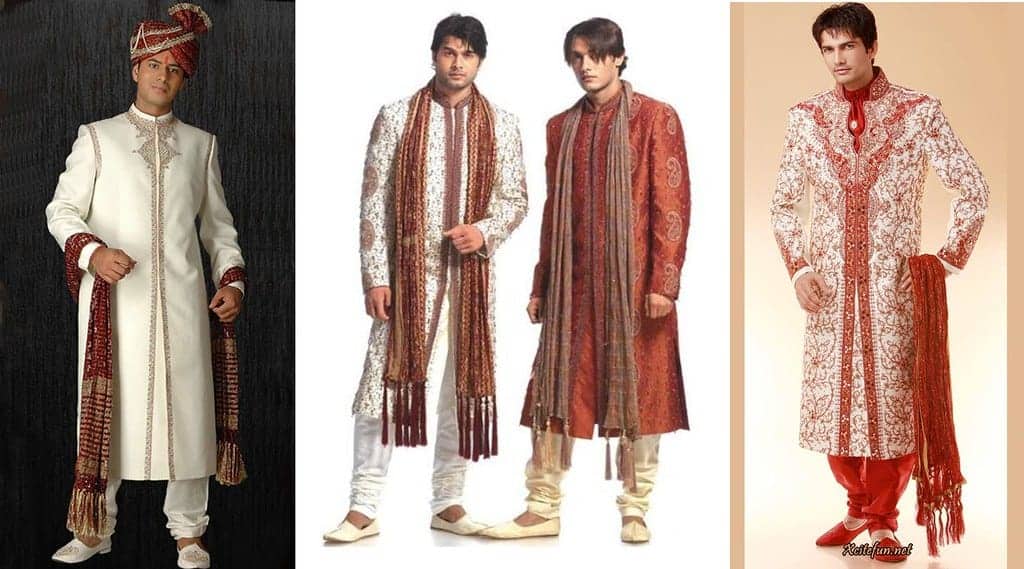
Sherwani is a long coat-like garment worn in the Indian subcontinent, very similar to a Western frock coat or a Polish and Lithuanian żupan. Originally associated with Muslim aristocracy during the period of British rule, it is worn over a kurta with the combination of either a churidar, a dhoti, a pajama, or a shalwar/sirwal as the lower-body clothing. It can be distinguished from the achkan by the fact that it is shorter in length, is often made from heavier suiting fabrics, and by the presence of a lining. Sherwani is worn on formal occasions.
Read More About Sherwani / Source
Salwar and kameez

Shalwar kameez (also salwar kameez and less commonly shalwar qameez) is a traditional combination dress worn by women, and in some regions by men, in South Asia, and Central Asia.Shalwars are trousers which are atypically wide at the waist but which narrow to a cuffed bottom. They are held up by a drawstring or elastic belt, which causes them to become pleated around the waist. The trousers can be wide and baggy, or they can be cut quite narrow, on the bias. Shalwars have been traditionally worn in a wide region which includes Eastern Europe, West Asia, Central Asia, and South Asia. The kameez is a long shirt or tunic. The side seams are left open below the waist-line (the opening known as the chaak), which gives the wearer greater freedom of movement. The kameez is usually cut straight and flat; older kameez use traditional cuts; modern kameez are more likely to have European-inspired set-in sleeves. The kameez may have a European-style collar, a Mandarin collar, or it may be collarless; in the latter case, its design as a women’s garment is similar to a kurta. The combination garment is sometimes called salwar kurta, salwar suit, or Punjabi suit.The shalwar and kameez were introduced into South Asia after the arrival of Muslims in the north in the 13th century: at first worn by Muslim women, their use gradually spread, making them a regional style, especially in the historical Punjab region. The shalwar-kameez is a widely-worn, and national dress, of Pakistan. It is also widely worn by men in Afghanistan, and by women and some men in the Punjab region of India, from which it has been adopted by women throughout India, and more generally in South Asia.When women wear the shalwar-kameez in some regions, they usually wear a long scarf or shawl called a dupatta around the head or neck. In South Asia, the dupatta is for modesty. For Muslim women, the dupatta is a less stringent alternative to the chador or burqa (see hijab and purdah); for Sikh and Hindu women, the dupatta is useful when the head must be covered, as in a temple or the presence of elders.
Everywhere in South Asia, modern versions of the attire have evolved; the shalwars are worn lower down on the waist, the kameez have shorter length, with higher splits, lower necklines and backlines, and with cropped sleeves or without sleeves.
Read More About Salwar and kameez / Source

